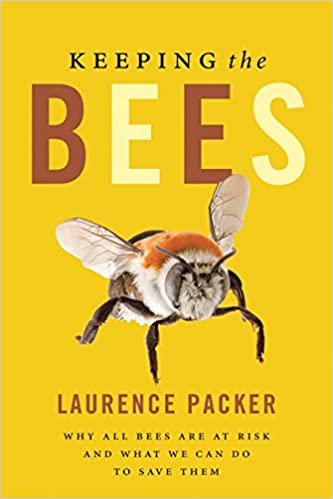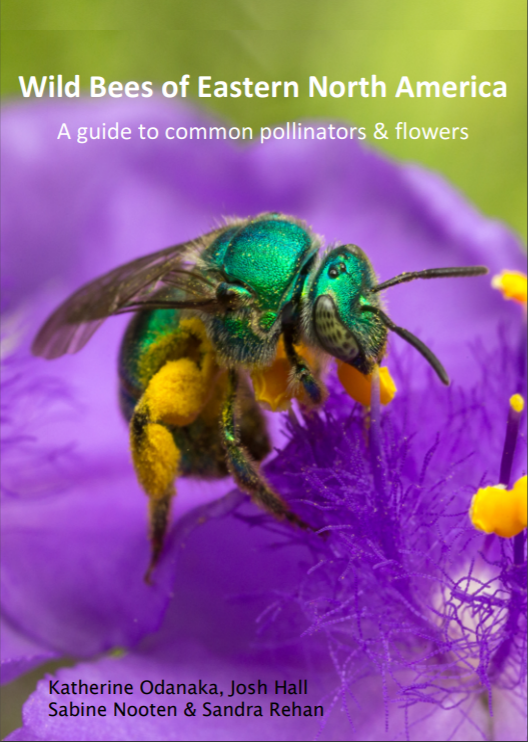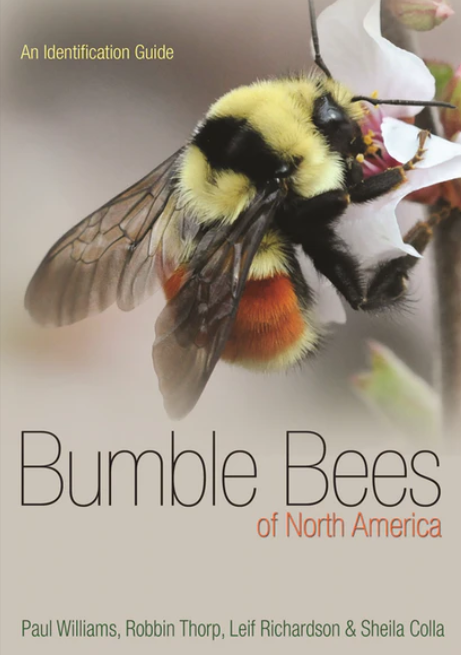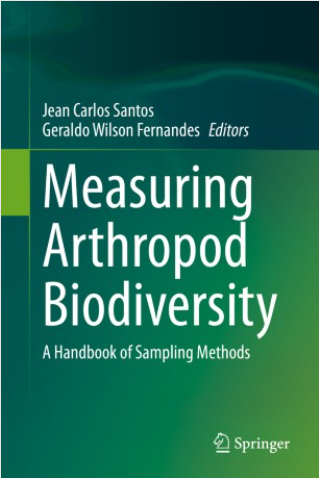Beyond the research published in scientific journals, we occasionally have an opportunity to write and we want to share our collective BEEc Library with you! What's this virtual library about?? You guessed it - bees 
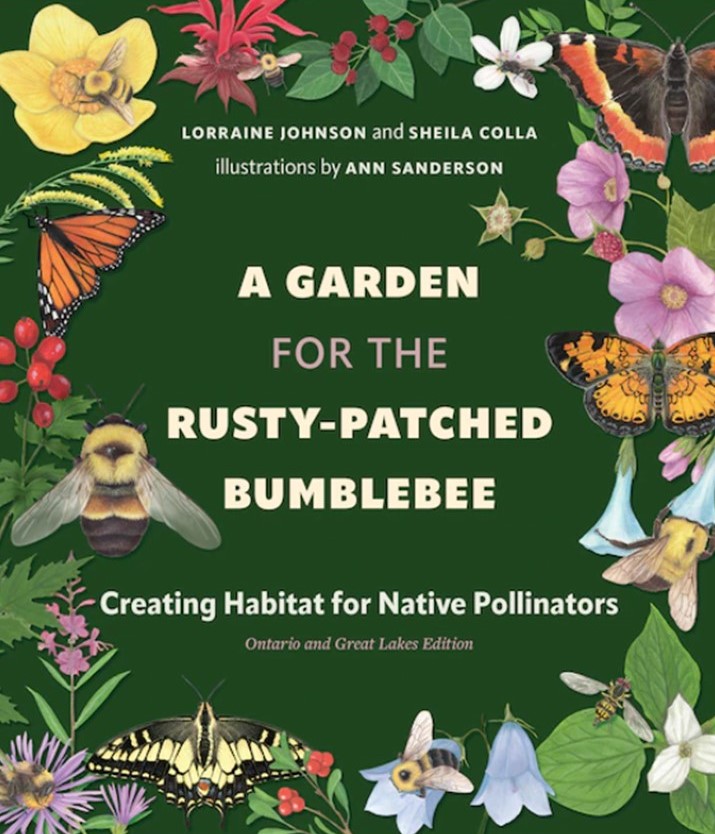
Support biodiversity with this practical guide to creating habitat gardens for native pollinators in Southern Ontario.
A Garden for the Rusty-Patched Bumblebee: Creating Habitat for Native Pollinators in Southern Ontario
by: Lorraine Johnson & Sheila Colla, Illustrations by: Ann Sanderson
Saving the bees is an environmental cause that resonates deeply with Canadians. While much of the popular focus is on honeybees, an introduced species, many people are largely unaware of the importance of native bees. These pollinators are of crucial importance and are threatened by climate change, habitat loss and fragmentation, and disease and competition from non-native species and modern intensive agriculture.
A Garden for the Rusty-Patched Bumblebee provides all the information needed for gardeners to take action to support and protect pollinators—by creating habitat in yards and communal spaces, and on balconies and rooftops.
There are approximately 400 species of native bees in Ontario, including bumblebees, sweat bees, mining bees, cuckoo bees, leafcutter bees and cellophane bees. This book introduces and deepens the concept of pollinator gardening—creating gardens that help bees thrive—by exploring specialist relationships. For example, the native-to-Ontario sweat bee Lasioglossum oenotherae specializes in pollen from the native evening primrose plant.
With plant recommendations specific to Southern Ontario, as well as useful garden designs and numerous tips for success, this compact, full-colour guide will enable gardeners to discover the crucial connections between native plants and native pollinators—and learn how to cultivate their own patch of pollinator paradise.
Keeping the Bees: Why All Bees are at Risk and What we Can Do to Save Them
by: Laurence Packer
From the jungles of South America to the deserts of Arizona,one thing remains consistent: bees are disappearing.A world without bees would be much less colourful, withfewer flowers. But that''s not all -- bees are responsible for upto one-third of our food supply, and the consequences of nottaking action to protect them are frightening. While the mediafocuses on colony-collapse disorder and the threats to honeybees specifically, the real danger is much greater: all bees are atrisk, whether it be from loss of habitat, pesticide use or disease,among other factors. And because of the integral role these insectsplay in the ecology of our planet, we may be at risk as well.
In Keeping the Bees, Laurence Packer, a melittologist whoselife revolves around bees, debunks many myths about thesecreatures and takes us behind the scenes with scientists aroundthe world who are working to save these fascinating creaturesbefore it''s too late.
Wild Bees Of Eastern North America
A guide to common pollinators and wildflowers
by: Katherine Odanaka, Josh Hall, Sabine Nooten & Sandra Rehan
The Rehan Lab focuses on wild bee research. We have special interest in pollinator biodiversity, behaviour, and evolution. This guide joins other educational books published to explore the regional native bee faunas of New England, California and the Great Lakes region. Our mission is to provide information about wild bees in eastern North America including information on their diversity, nesting biology, ecology, and flower associations to increase our understanding and awareness of pollinators and the services they provide.
This book was produced to give a brief introduction to the wild bees of eastern North America. We provide relevant information regarding their biology and pictures of commonly encountered wild bees and native wildflowers ideal for bees, as well as information detailing wild bee declines throughout eastern North America. Within this guide we have also included helpful and easy ways to identify commonly encountered bees and some frequent bee mimics.
Bumble Bees of North America
An Identification Guide
by: Paul H. Williams, Robbin W. Thorp, Leif L. Richardson, and Sheila R. Colla
The essential guide for identifying the bumble bees of North America
More than ever before, there is widespread interest in studying bumble bees and the critical role they play in our ecosystems. Bumble Bees of North America is the first comprehensive guide to North American bumble bees to be published in more than a century. Richly illustrated with color photographs, diagrams, range maps, and graphs of seasonal activity patterns, this guide allows amateur and professional naturalists to identify all 46 bumble bee species found north of Mexico and to understand their ecology and changing geographic distributions.
The book draws on the latest molecular research, shows the enormous color variation within species, and guides readers through the many confusing convergences between species. It draws on a large repository of data from museum collections and presents state-of-the-art results on evolutionary relationships, distributions, and ecological roles. Illustrated keys allow identification of color morphs and social castes.
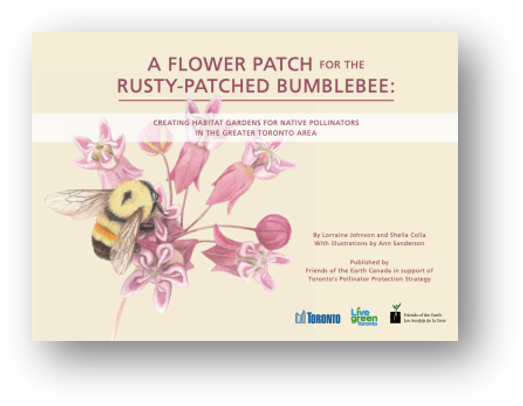
A Flower Patch for the Rusty-Patched Bumblebee
by: Lorraine Johnson & Sheila Colla
Friends of the Earth Canada is pleased to publish A Flower Patch for the Rusty-Patched Bumblebee and Other Native Pollinators in the Greater Toronto Area, working with authors Lorraine Johnson and Sheila Colla, illustrator Ann Sanderson, and the City of Toronto to make this resource available.
A Flower Patch for the Rusty-Patched Bumblebee provides powerful tools for taking action to support and protect native bees by creating habitat where we live, work and gather as communities. There is much that needs to be done to protect bees, but growing a flower patch is one action we can all take now to make a positive difference.
Bees: An Up-close look at Pollinators around the world
by: Sam Droege & Laurence Packer
While we eat, work, and sleep, bees are busy around the world. More than 20,000 species are in constant motion! They pollinate plants of all types and keep our natural world intact. In Bees, you'll find a new way to appreciate these tiny wonders. Sam Droege and Laurence Packer present more than 100 of the most eye-catching bees from around the world as you've never seen them: up-close and with stunning detail. You'll stare into alien-like faces. You'll get lost in mesmerizing colors and patterns, patches and stripes of arresting yellow or blue. Whether you linger on your first close look at the Western Domesticated Honey Bee or excitedly flip straight to the rare Dinagapostemon sicheli, there's no doubt you'll be blown away by the beauty of bees.
Measuring Arthropod Biodiversity
A Handbook of Sampling Methods
by: Jean Carlos Santos & Geraldo Wilson Fernandes
Laurence Packer has co-authored a chapter in "Measuring Arthropod Biodiversity". The
chapter is titled "Bees: how and why to sample them", check out the chapter abstract below and
click on the image to find the book:
A review of current capture and collection techniques for bees is presented. Information regarding primary collection techniques (i.e. netting, malaise traps, bowl traps, trap nests, visual surveys) along with issues of variability, bias, and the impacts of observers along with taxonomic impediments are discussed. Notable is the lack of standardization in any of these approaches along with a similar sparsity of statistical evaluation of the methodologies themselves. Practitioners deploy these and several lesser-known techniques, in a great many ways. We are at the beginning of a learning curve on how to develop accurate and precise research and monitoring tools for bee populations, and it is clear that there is much to learn.

